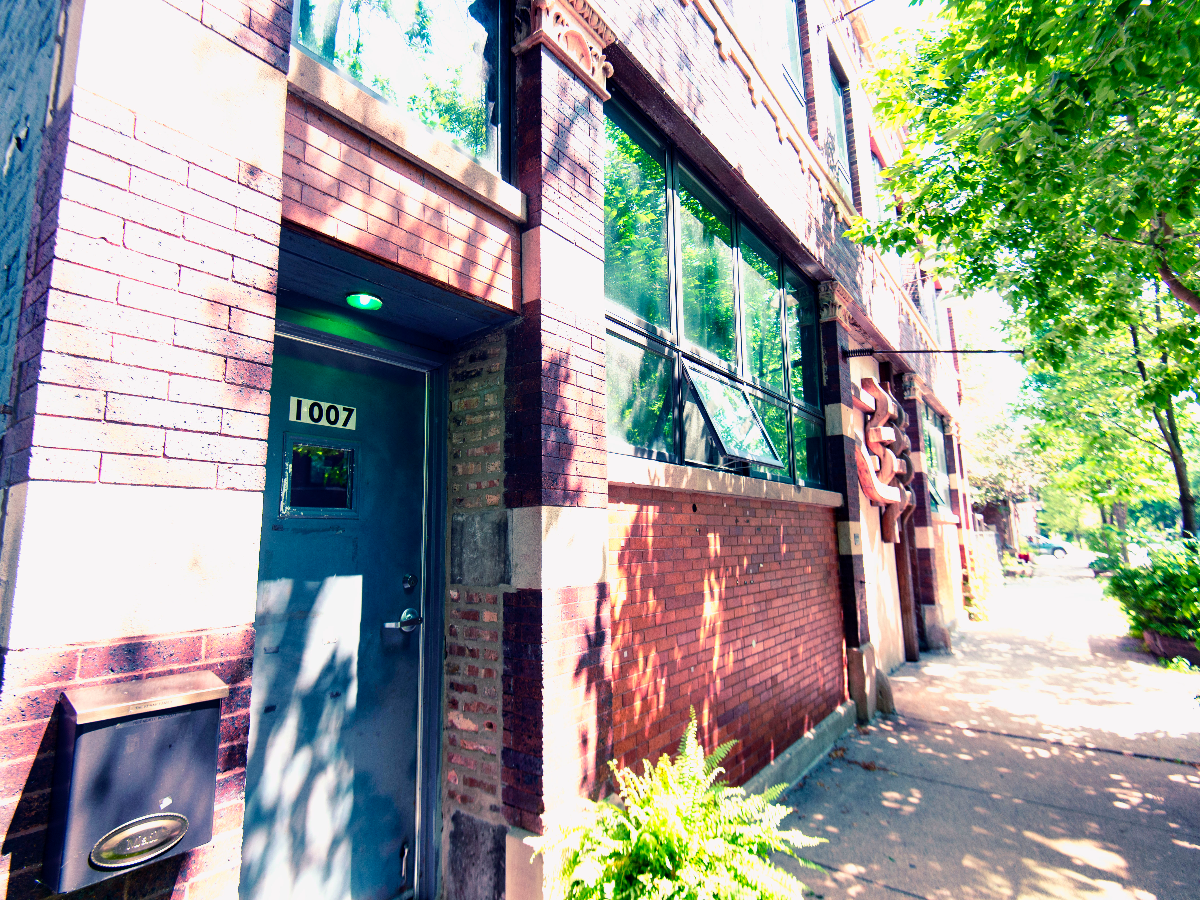What’s That Building? Liz Phair Edition
By Dennis Rodkin

What’s That Building? Liz Phair Edition
By Dennis RodkinOn June 22, 1993, Chicago musician Liz Phair released her debut album, “Exile in Guyville,” which was recorded at an independent studio in a rented space in a strip mall at 1520 N. Damen Ave.
“Exile in Guyville” — and The Smashing Pumpkins’ “Siamese Dream” — riveted national attention on Chicago’s music scene. Billboard magazine dubbed Chicago, “Cutting Edge’s New Capital,” and the New York Times called the city, “The Latest Next Seattle.”
But Phair’s successes started at Idful Studios, which now-famed producer Brad Wood co-ran from 1989 until 1997, when the owners of the strip mall did big renovations and Wood moved to a new space.
The building is now a modern speakeasy called The Violet Hour, with a facade of rustic wood slats above a graffiti-derived black-and-white mural that mostly conceals the door. But for a brief period in the mid-1990s, the building was the epicenter of Chicago’s music scene. A place where Phair, Veruca Salt, The Jesus Lizard, Eleventh Dream Day, and others recorded.

Wood described Idful Studios to the Chicago Reader: “Bands like it: it’s blocks from where they live, we’ve got AC, they can do their laundry next door, and while they’re doing it they can make a record.”
The space that was a laundromat is now an urgent care center

Phair, the daughter of a pioneering researcher on HIV/AIDS at Northwestern University’s medical school, was a few years out of Oberlin College when she recorded “Exile in Guyville.” She had already recorded cassettes, which she called “Girly Sound,” in 1991 in her childhood bedroom at her parents’ house in Winnetka. The tapes spread through the indie music scene, and Phair built a fan base.
In 1992, she reworked several of those songs for “Exile in Guyville.” The songs were spare, aggressive, and defiant — using words and images that had rarely been heard coming from a woman.
Phair has since described the “Guyville” mentality in dozens of interviews
This spring, she told the Chicago Tribune, “There’s a million Guyvilles. It’s in the studios, where you try to get movies made and cast. It’s anyone being white-privileged, being whatever it is that gives you invisible safety or invisible benefits. ‘Guyville’ could be a catchphrase for any oblivious community that has no idea that they’re shoving people to the side. I don’t know where it isn’t.”
Here are a few other noteworthy locations for Phair:
Wicker Park in the ’90s
In 1992 and 1993, when “Exile in Guyville” was recorded and released, Wicker Park was much different than it is today.
In a March 1994 article about Wicker Park’s hipness — and Phair and Brad Wood’s role in making that happen — the New York Times described Wicker Park as “pleasantly dilapidated.”

The photobooth at Rainbo Club
The cover of “Exile in Guyville,” featuring a closeup photo of a hooded Phair, was taken in the photo booth at the Rainbo Club, a cash only bar near Damen Avenue and Division Street in Wicker Park.

Phair wasn’t the only musician to hang out at the bar. In the ’90s, it was a popular hangout for bands like Urge Overkill and Tortoise.
But it was “Exile in Guyville” that the Chicago Reader has since called “the greatest album cover ever shot in the photobooth at the Rainbo Club.”

Phair’s many Chicagoland homes
Phair lived at several locations during her early years in Chicago, but because she was a renter the exact locations are hard to find. (Her management said it could not provide addresses, and Phair did not respond to requests for comment.)
She first lived at her parents’ house on Ash Street in Winnetka, and while working on “Exile in Guyville” she moved to Wicker Park. One of her apartments was above an art gallery at 1007 N. Wolcott Ave. According to the Chicago Tribune, she later lived on Bell Avenue near Holstein Park in Bucktown.

In 1996, three years after “Exile in Guyville” came out, Phair and her then-husband bought a 19th-century rowhouse on Geneva Terrace in Lincoln Park for $510,000. They sold it four years later for $660,000 and she moved to Southern California. (The four-bedroom house sold again last August for $1.25 million.)
Dennis Rodkin is a real estate reporter for Crain’s Chicago Business and Morning Shift’s “What’s That Building?” contributor.
